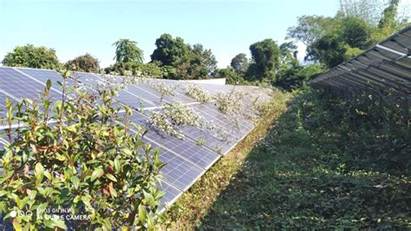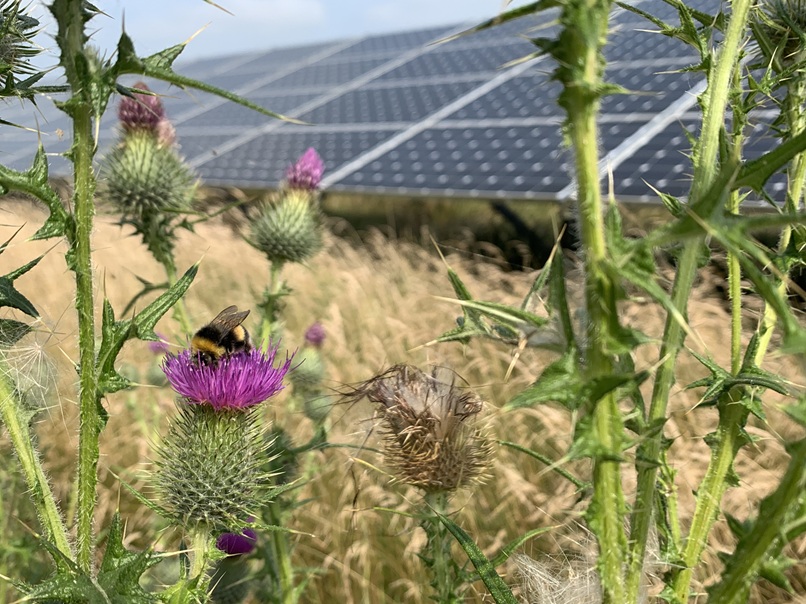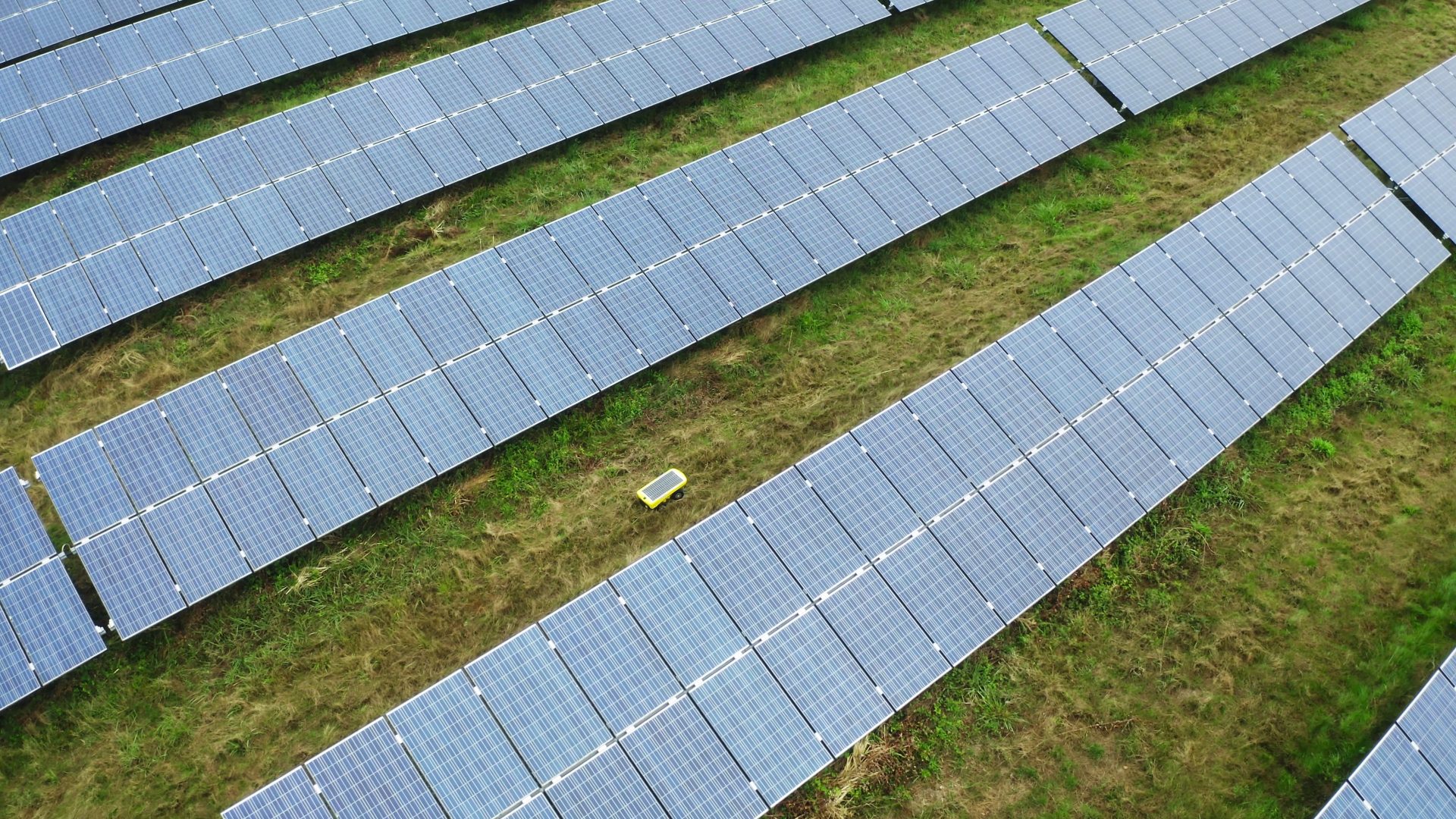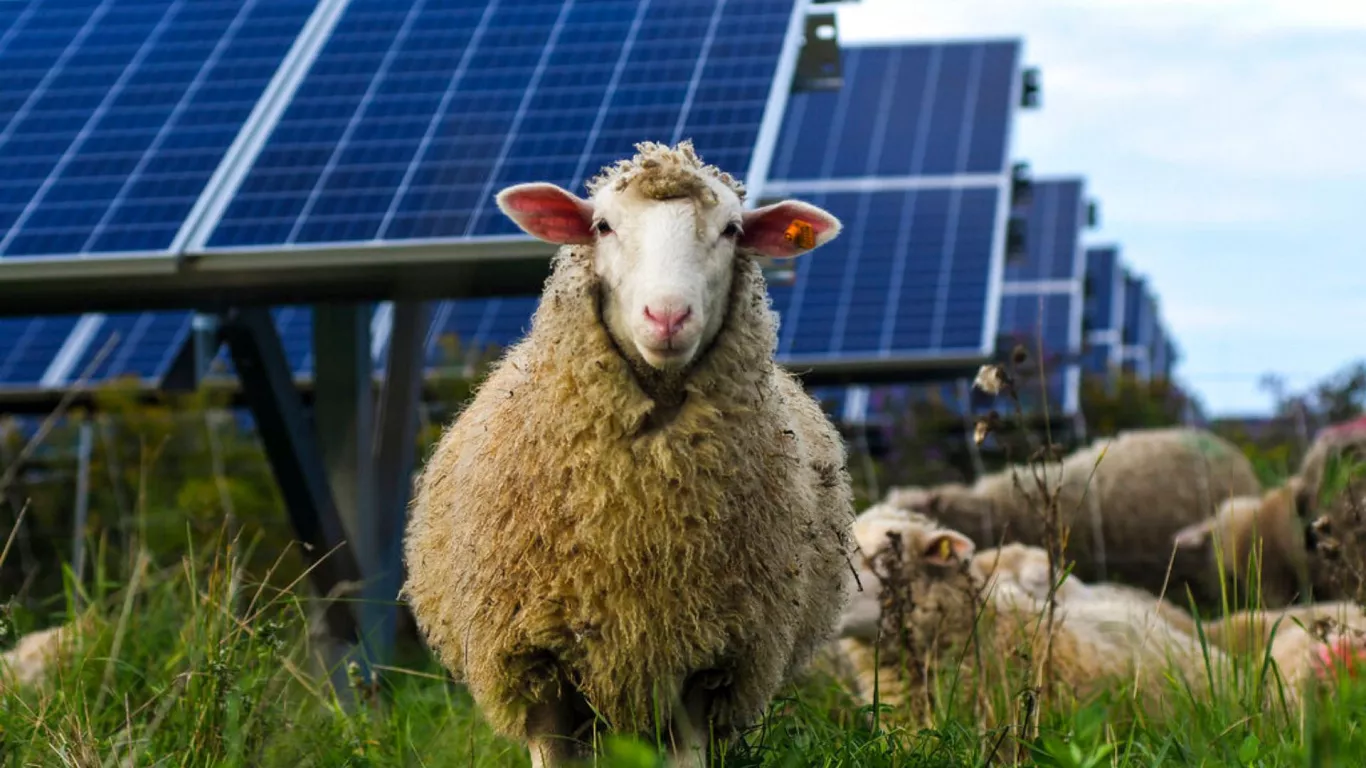Controlling weed growth in photovoltaic power plants
Controlling weed growth in photovoltaic power plants
A major technical and economic challenge.
Maintenance of the plant cover in ground-based photovoltaic power plants is all too often considered to be a secondary issue. However, it has a direct impact on the energy performance, safety and durability of the installation. Uncontrolled vegetation can shade the panels, compromise access to the equipment, encourage the development of invasive species and increase the risk of fire. Vegetation can also damage structures, hide technical faults and encourage rodents to prey on cables. These effects accumulate over the years, making it increasingly complex, time-consuming and costly to restore a site.

Anticipating invasion: the key to effective maintenance in the first year
Starting with a clear and active maintenance strategy in the first year is crucial. Freshly laid ground, which is still low in weeds, provides an ideal opportunity to establish a controlled cover. But if nothing is done quickly, the first opportunistic species will establish themselves, often among the most aggressive.
Japanese knotweed, for example, can grow up to 8 cm a day. Its ability to colonise land quickly and regrow from fragments of rhizomes makes it extremely difficult to control once established. The same applies to thistles, ragweed and brambles, which spread very quickly if mowing is irregular. Without early intervention, these species gradually invade the site, making energy production less efficient and more risky.

The limits of spot mowing: brush cutters, roto-tillers and mechanical mowers
The very common minimum strategy of two or three annual mowings is based on short-term budgetary considerations. However, the biological reality of the land means that this approach is not very effective. Most herbaceous species have a rapid growth cycle: they germinate, bloom and produce seeds within a few weeks. Between two passes, they therefore have ample time to reproduce and spread their seeds throughout the site.
Some plants, such as thistles and knotweed, react to cutting by intensifying their underground growth. This type of spot management does not therefore reduce plant pressure, but can even increase it. The tools commonly used, such as thermal brush cutters, roto-tillers or towed mowers, are rarely designed to work in the presence of fragile photovoltaic structures. They can throw stones, bend or hit the legs of structures, and damage panels.
What’s more, these machines don’t always reach the areas between the rows or under the modules, leaving pockets of dense vegetation where the most aggressive weeds can proliferate undisturbed.
Permanent mowing: an effective, preventive strategy
Permanent mowing does not mean continuous cutting, but keeping the plant cover at a low height all year round. This approach prevents plants from reaching their reproductive stage, which reduces the spread of seeds. It also encourages the stabilisation of a lower flora that is easier to maintain.
The soil remains covered, which limits erosion, improves water infiltration and helps maintain a certain level of biodiversity. For the farmer, it also means permanent access to infrastructure and fewer emergency interventions.
Autonomous mowing tools: technology for regularity
Robotic mowing solutions are developing rapidly. They make it possible to keep the grass low on a regular basis, without constantly mobilising human teams. The robots can be programmed to work continuously, adapt to the weather or site constraints, and work as close as possible to the panels without risking damaging them.
These systems are not intended to completely replace human intervention, but to ensure continuity and precision in accessible areas. They reduce the carbon footprint, prevent soil compaction and help to stabilise the maintenance strategy over time.

A hybrid approach for consistent results
Today, the combination of regular autonomous mowing and targeted one-off interventions is the most effective strategy. Robots provide a continuous presence in large open areas, while human teams concentrate on dense, sloping areas or those infested by invasive species.
This hybrid approach makes it possible to retain control of the site while optimising resources. It also reduces the need for extreme treatments such as chemical weeding or mass uprooting.
Eco-grazing: a complementary but not sufficient solution
Using sheep to maintain a solar park is a common practice, but one that has significant limitations. Sheep tend to select the most tender species, leaving tough or toxic plants, which are often invasive. It is not uncommon to see entire areas colonised by thistles or nettles, ignored by the flocks.
What’s more, this method requires heavy logistics: herd management, fencing, water, veterinary care and surveillance. So it’s not a fine, permanent management solution, but rather a one-off addition to an overall strategy.

Economic drift: the risks of the lowest bidder
The desire to reduce maintenance costs sometimes leads to critical situations. Companies are offering low-cost services, made possible by employing staff who are undeclared, untrained or even unqualified to work on an electrical site. The equipment used is often basic and unsuited to the constraints of power stations.
These practices can lead to major damage: broken panels, disconnected or torn connectors, weakened structures, or accidental cutting of cables under load, with an attendant electrical risk. Worse still, some interventions lead to serious non-conformities that can halt production or render the operator criminally liable in the event of an accident.
Faced with these risks, more and more qualified landscape contractors are opting not to respond to calls for tenders for solar power plants, which are deemed too low-paying given the requirements and responsibilities involved. As a result, the sector is in danger of seeing a decline in the number of serious service providers, to the benefit of players prepared to cut corners on quality and safety.
Conclusion
Effective weed management in photovoltaic power plants cannot be improvised. It is based on a preventive, ongoing strategy tailored to the specific nature of each site. The use of autonomous mowing tools, combined with targeted human intervention, provides a sustainable response to the technical, ecological and economic requirements of the sector. Prioritising the quality of maintenance means protecting the plant’s performance, avoiding devaluation of the asset, and limiting costly or dangerous drift in the long term.
Publié le 8 May 2025